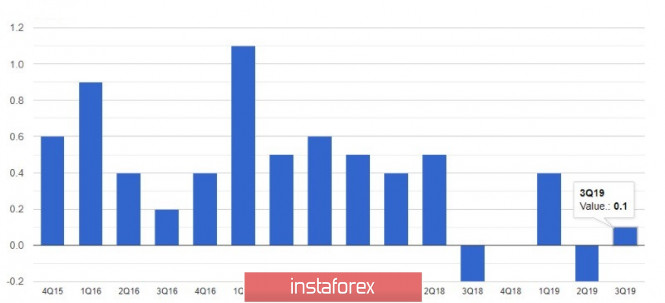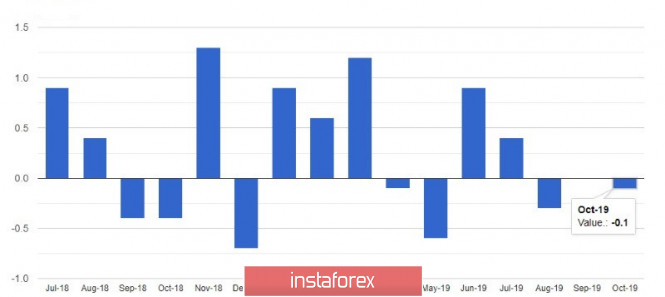Recession, stagnation, crisis in the economy - these are the terms that are increasingly used by economists when talking about Germany and its future prospects. The locomotive of the European economy, apparently, continues to slow down, and the small growth that was recorded in the third quarter of this year is far from being a cause for pride. Although the recession in Germany was delayed, it is unlikely that it will be possible to cancel it in the current situation in the economy during its stagnation.

Basically, the prospects are overshadowed by numerous political and economic risks - starting with Brexit and the US trade war with the eurozone and ending with the introduction of negative interest rates from the European Central Bank. The only thing that keeps the German economy afloat is the strong domestic demand, which is clearly lacking, as export problems continue to have a serious impact on the industry.
According to today's report by the Federal Bureau of Statistics Destatis, Germany's GDP grew by 0.1% in the third quarter of this year, compared with the second quarter. Economists had expected GDP to fall by 0.1%. A larger decline in Germany's GDP for the second quarter by 0.2%, rather than 0.1%, also does not add optimism. Germany's GDP grew by 1% compared with the same period last year, which fully coincided with the forecasts of economists. Adjusted for inflation, growth was only 0.5%.

Today, a report of the European statistical agency Eurostat was also published, which indicated that the eurozone GDP grew in the third quarter, but the data fully coincided with expectations. The weak growth of the European economy justifies the recent actions of the European Central Bank to lower deposit rates and the resumption of the bond purchase program since November this year. According to data, eurozone GDP grew by only 0.2% in the third quarter compared with the second. The economy showed growth of only 1.2% compared to the same period of 2018. Economists predicted that annual GDP growth would be 1.1% and quarterly growth 0.2%.
In the morning, the report on the unemployment rate in France is higher, which rose to 8.6% in the third quarter of this year, against 8.5% in the second quarter. Economists expected unemployment unchanged.
The current situation in the eurozone economy indicates the need for further stimulus measures by the ECB, which will continue to exert medium-term pressure on the European currency. From a technical point of view, a breakthrough of support at 1.1000 opens a direct path for sellers of risky assets to lows in the areas of 1.0970 and 1.0940. Only a trend reversal above the resistance of 1.1025 will return some confidence to buyers, which will lead to the closure of a number of short positions and a more powerful upward momentum to the highs of 1.1060 and 1.1100.
GBPUSD
The British pound was not able to cling to the resistance of 1.2860, which the bulls are seeking throughout the week. A weak report on retail sales in the UK in October this year once again pointed to problems in the economy. The decline has been observed for the third consecutive month, which is an alarming call for the Bank of England.

According to the UK National Bureau of Statistics, in October 2019, retail sales decreased by 0.1% compared to September. The fall was due to lower sales of volatile categories, in particular, food and household items. Sales grew by 3.1% compared to October 2018. Most likely, the persistence of uncertainty associated with Brexit makes consumers more cautious about their costs.
As for the technical picture of the GBPUSD pair, a break of the support level of 1.2820 will increase pressure on the pound and push it into the region of this month's lows, in the areas of 1.2800 and 1.2770. It will be possible to talk about the continuation of the upward correction only after the trading instrument consolidates above the resistance of 1.2860, which will open real prospects for updating the highs of 1.2900 and 1.2940.
The material has been provided by InstaForex Company - www.instaforex.com